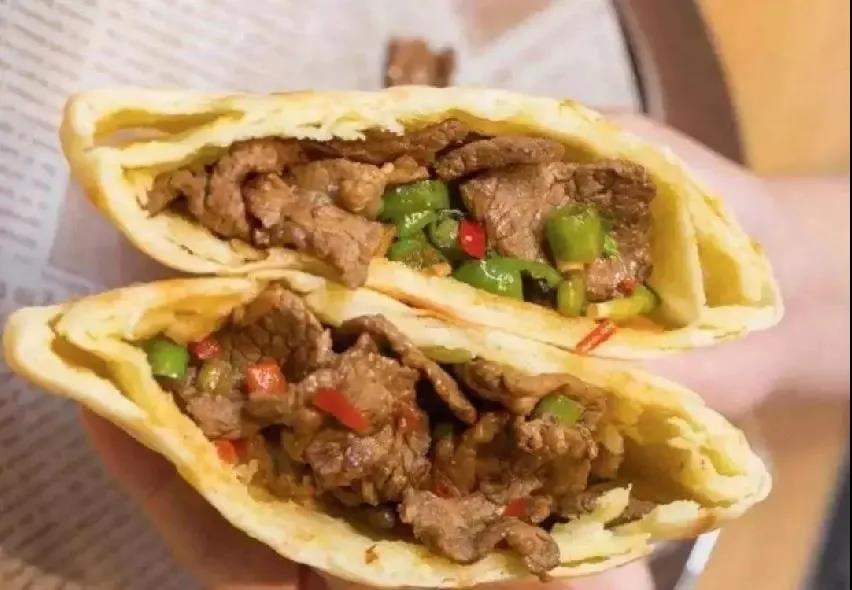Why is it so difficult for catering brands to create new categories?Today's headlines

After any catering brand has developed to a certain scale, it will begin to find new categories, expand its product categories, and expand the target customer base. This is the only way for a catering brand to become bigger and stronger.
Cultivating new categories is a relatively long and patient process. In this process, many catering people give up because they are not firm in their will. For example, facing an immature market, the team’s confusion, and even the pressure of funds, may cause the founder to abandon the new category.
At that time, Ah Wu Delicacy was renamed Ah Wu Yellow River Big Carp, Banu Hot Pot was renamed Banu Maodu Hot Pot, Wang Shun Ge was renamed Yutou Pao Bing, and Xijiade was renamed Xijiade Shrimp Dumplings, all of which were very painful. The category cultivation process. In order to make the new category popular, they not only put effort into the products that ordinary people can't imagine, but also invested huge advertising expenses in the spread of the category.
It is not difficult to create a new category, but many catering brands have encountered difficulties when creating a new category. Why is it so difficult to successfully create a new category?
ONE
Catering big names are caught in a new category dilemma
It is difficult to successfully create a new category. Although these big brands have previous successful experience to learn from, the new category may not be applicable, and it cannot be directly applied to the new category. Further transformation, around the new category, formulate a new system.
In the creation of new products, major catering brands are constantly experimenting, such as Xibei Noodle Village. From oatmeal noodles, Maixiang Village, Xibei multi-grain shops to the current Xibei Super Meat Sandwich, Xibei has spent a huge amount of money. Energy, but still in constant exploration.

As a representative brand of small hot pot, Xiabuxiabu has developed very fast in China, and it has also led a wave of one-person hotpot trend. While pursuing progress, Xiabuxiabu launched its own brand Coucou hot pot, focusing on the hot pot + tea route, which is considered a new combination category, but the market response has been cold.
In addition, Haidilao’s U Ding Maocai and Huang Jihuang’s three-point full, etc. have not achieved very good results. Haidilao’s main cost-effective eighteen boil noodles and Qin Xiaoxian rice noodles can finally succeed, it will take time. To prove.
TWO
What is the difficulty in creating new categories?
Cultivating a new category is like doing research. You need to keep trying to find a category that can grow in many possibilities. It is too difficult to create a completely different new product out of thin air, so usually catering companies choose to make certain improvements or subdivisions from their original catering categories or existing meals.For example, Xibei Roujiamo is based on Roujiamo, changing the materials of the steamed bun and the inset, and carrying out a certain degree of innovation. However, the biggest problem with the new category is how to improve customers' awareness of the new category. This is why Xibei’s oatmeal noodles and Maixiangcun do not do very well, resulting in a small audience that has not developed.
An unfamiliar product needs sufficient publicity and marketing to be gradually accepted by customers. So when a new product comes out, people don’t know what it is and what characteristics it has, which makes it difficult for customers to choose, so it’s not a good product. This was improved a lot in the later Xibei Super Meat Sandwich, but when it first came out, it was different from the previous Maixiangcun, etc., and quickly gained a good popularity.

When a new category comes out and is welcomed, it does not mean that everything is going well. You also need to constantly promote the new product in order to get more customers. You also need to seek customer opinions, improve the new product, and strive for perfection. There are many new products that have gained popularity at the beginning, maybe just because customers want to try new things, so they must not be deceived by the inflated popularity at the beginning and fall into complacency.
For catering products, the most important moat is strength. Make your products so good that others cannot imitate them, or require huge capital and time costs, then you will succeed.
For example, Banu Maodu Hotpot has made great efforts to construct the category moat. Since 2014, Banu has focused on Maodu Hotpot, and has begun to work hard on the brand. The first is to make the dishes the ultimate. This ultimate includes: raw material selection, transportation of hairy belly, hairy belly production, hairy belly modeling, etc., and secondly, the ultimate experience of hairy belly: special Maodu Ming files and Maodu words There are also a series of cultural and market interpretations about Maodu. In short, all the methods that can make the dish of Maodu into an explosive style will not be overlooked.
However, the ultimate in dishes is only the basic condition for success, so how to prevent competitors from surpassing? It is the "product doctrine" that is put forward on the basis of gross belly. The thing of "ism" is the highest-level placeholder. It is lethal, penetrating and infectious. This is the ultimate in shaping the category of Baru. Competing for nuclear weapons.
The hair belly has been made to the extreme. From raw material selection, hair belly transportation, hair belly hair production, hair belly modeling, etc., great efforts have been made to create and continuous optimization. This is the moat of Banu, and one thing is made to the extreme.
Another example is Jiang Xiaobai. At the beginning, Dachang felt that sorghum wine was a relatively small category and looked down upon it. But Jiang Xiaobai caught the rise of the circle of friends, the rise of social media, and the rise of the young people's wine-making culture. He became an instant hit and became the "two pots of young people."
On the contrary, many big companies have started to follow suit, but they do not know that in the eyes of young people, the most despised is following suit.
In summary, the development of a successful category will face three difficulties. The first is the choice of category, the second is the effort and cycle of research and development, and the third is to create a moat for new categories.
THREE
How to develop successful categories?
Create new categories, that is, discover new needs.
Because it is a new category, it successfully avoided the advantages that the old category had accumulated over time, and gained the opportunity to seize the minds of consumers!
For example, "Ramen Talk" has chosen a unique track: "Traditional instant noodles cannot be hit, and takeaway is difficult to be cheaper than this" segment of the market. Starting from Japanese fast food, the product pricing is concentrated at 12-20 yuan. Yuan between.
It has torn away a high-end market segment from the convenience and fast food industry controlled by giants, and it has created a way to survive, and it is a very rich road!
It is not an exaggeration to say that the image of "unhealthy" instant noodles that Master Kong and Uni-President have spared no effort to reverse for so many years has been truly realized in the "ramen theory", allowing consumers to eat noodles at home without having to go to a ramen restaurant to have a high-level ceremony. Sense, let those urban young people who are particular about food but lazy find the late-night canteen for their hearts and stomachs!
In the end, when traditional brands finally see this potential and understand how to play, but you have gained the ability to survive and have a place in the market, the giants can't kill you.
In terms of category selection, freshness and uniqueness are important elements to attract customers. The exploration of new categories cannot be completed overnight. Whether it is Xibei Noodle Village, Haidilao, Banu Maodu Hotpot or global chain brands such as KFC and Pizza Hut, customers' perception of them is not in the short term. In the process of developing new categories, catering brands should not rush for success.
Different categories will have great differences. Some categories have a large audience and have great potential, while some categories have a small audience and there are not many things that can be explored. They are only suitable for small boutiques. It's like wine, some wine can be sold for thousands, and some wine can only be used for cooking. Take fruit as an example. Some people like to eat durian very much, but some people will feel that durian is smelly and refuse to taste it. Therefore, the audience of durian is very limited.
The audience size is also very important for the development of new categories. Otherwise, even if the craftsmanship is improved and a high-quality product is made, it will easily become a priceless product. And those products with a wide audience can easily increase the product premium through product upgrades, creating boutiques, brand effects, etc., and thus become popular among people.
Finally, when developing a new category, you must have a well-drilling mindset. After choosing the right category, you must continue to dig into the category and build your own moat. Only then can you get rid of your competitors and become the final winner.
Many categories can find new opportunities to do it again. When a brand steps on the traffic red carpet and stands in the spotlight, whether you can continue to gain traffic and win the minds of consumers depends on the brand's own long-term operational capabilities.
免责声明:1.餐饮界遵循行业规范,转载的稿件都会明确标注作者和来源;2.餐饮界的原创文章,请转载时务必注明文章作者和"来源:餐饮界www.canyinj.com",不尊重原创的行为餐饮界或将追究责任;3.投稿请加小编微信toutiaoxiansheng或QQ1499596415。4.餐饮界提供的资料部分来源网络,仅供用户免费查阅,但我们无法确保信息的完整性、即时性和有效性,若网站在使用过程中产生的侵权、延误、不准确、错误和遗漏等问题,请及时联系处理,我们不承担任何责任。
 扫码关注餐饮界微信号
扫码关注餐饮界微信号


 Media
Media


